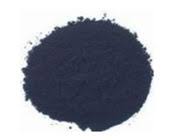Setting Up Indigo Dyeing Processes for Fabric Manufacturers
The Role of Indigo Dye in Fabric Manufacturing
Indigo dyeing, a centuries-old technique, has carved a niche for itself in the fabric manufacturing industry. Known for its deep, vibrant blue color, indigo has been a staple in textile production for both its aesthetic appeal and its cultural significance. As manufacturers increasingly strive to incorporate sustainable practices into their processes, the art of indigo dyeing has found a renewed relevance in today's market.
The Role of Indigo Dye in Fabric Manufacturing
In modern fabric manufacturing, indigo dye serves multiple purposes. Its versatility allows it to be used on various fabrics, including cotton, linen, and silk. The unique properties of indigo dye create a distinct visual complexity in fabrics, characterized by a rich color depth that evolves with each wash. The gradual fading of indigo with time adds to the charm and uniqueness of each piece, appealing to consumers' desire for individuality.
setting indigo dye in fabric manufacturer

The environmental impact of fabric production has become a critical concern, urging manufacturers to explore sustainable dyeing options. Chemical dyes often involve high water usage and toxic waste, whereas natural indigo processes can be relatively low-impact when managed properly. Manufacturers committed to sustainability are incorporating traditional indigo dyeing methods, which not only reduce the ecological footprint but also enhance the storytelling aspect of their products. This connection to heritage and craftsmanship can be a significant selling point in the market.
Moreover, the modern consumer is increasingly interested in the sustainability practices of brands. By using indigo dye, manufacturers can communicate their commitment to eco-friendly practices. Many brands are now engaging consumers through transparency, sharing their dyeing processes, sourcing of indigo, and environmental benefits associated with using natural dyes. This educational approach helps create a narrative that resonates with conscious shoppers and fosters brand loyalty.
Technological advancements have also played a role in the resurgence of indigo dye in fabric manufacturing. Innovations in dyeing techniques, such as the use of digital printing with indigo, allow for more precise application of color and patterns. This not only minimizes waste but also opens up new creative avenues for designers. As brands experiment with unique dyeing techniques and patterns, the versatility of indigo is showcased in modern collections.
In conclusion, the setting of indigo dye in fabric manufacturing is evolving as industry standards shift toward sustainability. The combination of tradition, craftsmanship, and modern technology is making indigo dye not just a color, but a symbol of eco-consciousness in textiles. With the growing demand for sustainable products, the use of natural indigo has the potential to influence the fabric manufacturing sector significantly. As we move forward, it will be fascinating to see how indigo dye continues to shape the future of textiles, representing a fusion of heritage and innovation that meets the demands of an increasingly aware consumer base.
-
The Timeless Art of Denim Indigo Dye
NewsJul.01,2025
-
The Rise of Sulfur Dyed Denim
NewsJul.01,2025
-
The Rich Revival of the Best Indigo Dye
NewsJul.01,2025
-
The Enduring Strength of Sulphur Black
NewsJul.01,2025
-
The Ancient Art of Chinese Indigo Dye
NewsJul.01,2025
-
Industry Power of Indigo
NewsJul.01,2025
-
Black Sulfur is Leading the Next Wave
NewsJul.01,2025

Sulphur Black
1.Name: sulphur black; Sulfur Black; Sulphur Black 1;
2.Structure formula:
3.Molecule formula: C6H4N2O5
4.CAS No.: 1326-82-5
5.HS code: 32041911
6.Product specification:Appearance:black phosphorus flakes; black liquid

Bromo Indigo; Vat Bromo-Indigo; C.I.Vat Blue 5
1.Name: Bromo indigo; Vat bromo-indigo; C.I.Vat blue 5;
2.Structure formula:
3.Molecule formula: C16H6Br4N2O2
4.CAS No.: 2475-31-2
5.HS code: 3204151000 6.Major usage and instruction: Be mainly used to dye cotton fabrics.

Indigo Blue Vat Blue
1.Name: indigo blue,vat blue 1,
2.Structure formula:
3.Molecule formula: C16H10N2O2
4.. CAS No.: 482-89-3
5.Molecule weight: 262.62
6.HS code: 3204151000
7.Major usage and instruction: Be mainly used to dye cotton fabrics.

